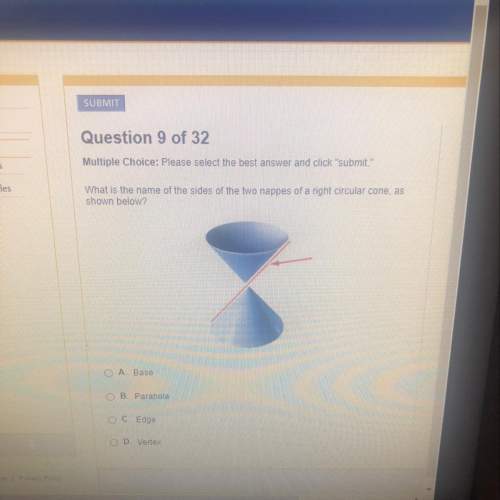
Mathematics, 27.09.2019 03:30 shimonypuck28
Based on the data in the two-way table, which statement is true?
a. p(consumes 1,000−1,500 calories|weight is 165) = p(consumes 1,000−1,500 calories)
b. p(weight is 120 lb.|consumes 2,000−2,500 calories) ≠ p(weight is 120 lb.)
c. p(weight is 165 lb.|consumes 1,000−2,000 calories) = p(weight is 165 lb.)
d. p(weight is 145 lb.|consumes 1,000−2,000 calories) = p(consumes 1,000−2,000 calories)
weight/calories per day: 120 145 160/total
1000 to 1500 cal: 90 35 15/total 140
1500 to 2000 cal: 80 143 27/total 250
2000 to 2500 cal: 10 25 75/total 110
total: 180 203 117/ total 500

Answers: 2


Other questions on the subject: Mathematics

Mathematics, 21.06.2019 17:00, savannahsims4750
If i have a 24 in loaf of bread and i cut it into two pieces one 9 in how long was the other
Answers: 2

Mathematics, 21.06.2019 19:10, brownzackery71
Girardo is using the model below to solve the equation . girardo uses the following steps: step 1 add 4 negative x-tiles to both sides step 2 add 1 negative unit tile to both sides step 3 the solution is which step could be adjusted so that gerardo's final step results in a positive x-value? in step 1, he should have added 4 positive x-tiles to both sides. in step 1, he should have added 3 negative x-tiles to both sides. in step 2, he should have added 4 negative unit tiles to both sides. in step 2, he should have added 1 positive unit tile to both sides.
Answers: 2

Mathematics, 22.06.2019 00:00, camila9022
Tatiana reads 40 pages of her book every night for x number of nights. write an expression that shows the number of pages she has read
Answers: 3
You know the right answer?
Based on the data in the two-way table, which statement is true?
a. p(consumes 1,000−1,500 c...
a. p(consumes 1,000−1,500 c...
Questions in other subjects:

Computers and Technology, 11.07.2019 19:00

Computers and Technology, 11.07.2019 19:00

Computers and Technology, 11.07.2019 19:00

Computers and Technology, 11.07.2019 19:00

Computers and Technology, 11.07.2019 19:00


Business, 11.07.2019 19:00


Chemistry, 11.07.2019 19:00

Chemistry, 11.07.2019 19:00




